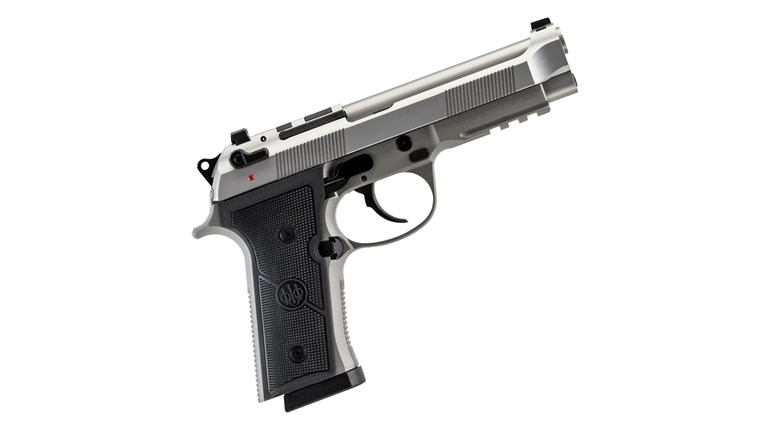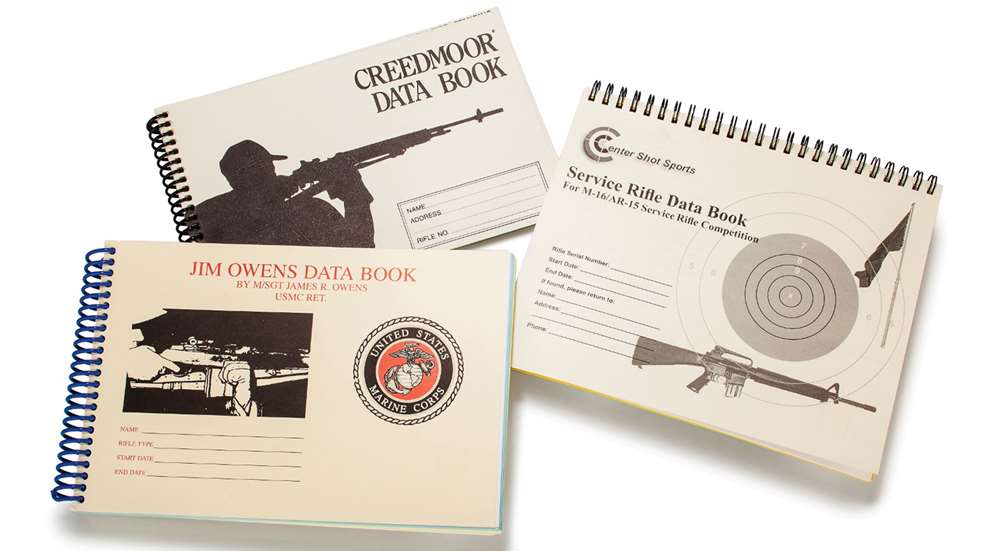
We asked a few experts and fellow shooters to share their lessons learned with data books. As it turns out, sometimes it’s best to leave them in your cart.
David Tubb
Eleven-time National High Power Champion, 30 Open NRA Silhouette Rifle Championship titles in all four rifle categories, seven Sportsmen’s Team Challenge Championships, six NRA Long Range Rifle (600-1000 yards) National Championships, author, equipment developer, coach.
For years I have used a small, replaceable-page notebook that fits well into a pocket of the shooting stool. It records elevation and windage settings per density altitude values for various rifles used at Camp Perry (across the course, long range, and Palma events).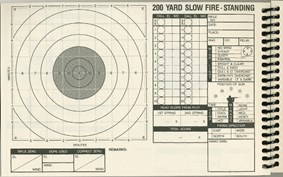
A portion of the book is dedicated to short but important notes concerning what or how to hold, or set up the rifle for a particular position. Since my rifles are virtually the same and have a dedicated rear butt assembly per each position, one does not need to record stock settings.
I don’t record scores or conditions at any time in my notes. I do, however, make it a point to take my completed scorecard back to the ready line and take its picture before my scorekeeper turns it in.
I recommend that your readers use their notebook to record important data per their particular wants and needs. These will change with time—hence, the replaceable page notebook is an advantage.
Nancy Tompkins
Author and competitor Nancy (Gallagher) Tompkins lives in Arizona, with her husband, “Mid.” She is the mother of champion shooters Michelle Gallagher and Sherri Gallagher. Nancy has been on seven Palma Teams, won seven Leech Cups, the Fullbore Nationals and the Metric Smallbore Nationals.
A data book can be both good and bad. They are helpful when practicing, testing loads or ammo lots and when trying new equipment, positions or techniques. It is during these times that you need to keep track of anything new that you have tried. If you have made a change that you like, make sure that you write it down. It’s too easy to make a simple change and then forget what it was the next time you shoot. Write everything down in detail. If you try something and it doesn’t work out, write that too, as it will stop you from wasting time later on. A data book is like a shooting diary. You can keep track of your sight settings, date, time, how you are feeling physically and mentally, the weather, and how the conditions affected you.
Now, this is where I may differ from others. While a data book or diary is great for keeping track of information, I feel that it should never be used during long range competition. When you are in your time limit for shooting your string of fire, you don’t want the distraction of writing in a book. You should be 100 percent focused on your performance, the wind and mirage. Also, the more time spent shooting your string, the more condition changes you will have to deal with. Therefore, someone who shoots their string in eight minutes will essentially be shooting in half the condition changes of a shooter firing for 16 minutes.
When shooting long range, I begin with windage set to zero. While in position, and after looking at the wind and mirage, I set my windage to hit the middle of the target. I confirm my target number, center the shot, fire, call the shot, watch the wind for any changes, watch the target go into the pits, look at the conditions again, see where my shot placed when the target comes out of the pits, make any needed corrections on my sights and repeat the sequence. I run this routine as long as I can keep up with the conditions.
Sherri Gallagher
Former AMU team member, Sherri was the Army Soldier of the Year in 2010, won the 2003 World Long Range Championships and the 2010 Across-the-Course Nationals with the highest score ever fired. She has won the Long Range Nationals and holds numerous national records. Sherri now serves with the Army Golden Knights Parachute Team.
The data book is one of the most important tools you can use to optimize performance and maintain consistency. As a beginner, write everything down: From zeros, sight picture, weather to sling settings, gun settings, mental preparation before, during, and after match. Include pictures of your position once you have it figured out, load data, and anything else you don’t want to forget—like a shooting diary.
For High Power, it is important to plot shots during offhand and rapid fire to see where your groups are trending and make appropriate zero changes to set you up for success the next time you shoot. Also for offhand, I mark my calls on the side of the page to indicate where I think the shot broke, to make sure it is consistent with the actual shot placement.
As for 600-1000 yards, my views are slightly different. Write down what is important to you, especially starting and finishing zeroes. I do not plot during my string, as I want to either be on the sights, shooting, or in the scope, watching the weather conditions.
Denise Loring
Denise Loring served two tours with the AMU, shooting International smallbore and air rifle. Loring was a member of the U.S. Shooting Team in 1987 and 1988 and was selected to compete with the United States Army Reserve Service Rifle Team, achieving Master Class in her first season. She recently wrote her first article in SSUSA about electronic targets.
For smallbore and air rifle, the shooting diary is a critical piece of the kit. All of your equipment set-up (butt plate setting, sight position for eye relief, cheekpiece height, etc.) is recorded so you can set the rifle up the same way each time. You should enter all the information on your rifle setup, sling adjustment, ammunition brand and lot number, scores fired, wind information, weather and light information. I keep track of my scores, both in training and from the match, so I see any trends over time to recognize if changes in position are working out, or need to be changed again. I write most of this information down after the match, so I am reflecting on the performance.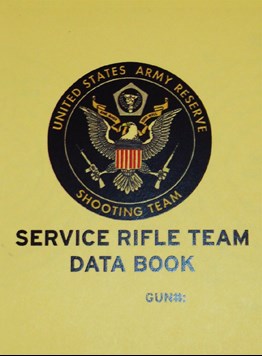
Once position and equipment issues are resolved, the scores should be going up. I write down how the position feels and what my frame of mind was during the performance. Because the mental aspect of shooting is so important, my accounts are written in a “positive voice.” I focus on what works and how changes produced a better performance, rather than on what is not working. I may note what I ate for breakfast, or for lunch, but after I have altered my eating to support shooting, this quickly becomes a non-issue.
Drawing from my smallbore and air rifle experience, I use the shooting scorebook (diary) the same way in High Power. At Camp Perry, all of my equipment set up was recorded so I could replicate my position and set up quickly once on the line. Because I am new to High Power, I may be keeping notes now that I may not need after more experience. Keeping track of the rear sight adjustments from mechanical zero is critical as the come-ups change during the across-the-course matches, and sight adjustments made for wind need to be applied. Writing sight adjustments down means you never lose track, especially if you are not shooting frequently. As a quick reference, I clip a 3x5 index card to the front of my data book with the rear sight data for that firing line. High Power matches seem to have less prep time than smallbore, so I try to stay ahead in order to use my three-minute prep for dry-firing and position refinement.
Another good reference is the wind chart found in the front of most data books, which makes an easy reference for MOA/sight calculations. I also note the ammunition that I am firing, commercial or handloads, and weather data. Recording scores in practice and competitions will show any trends or improvements and how slight changes to positions and equipment affect performance. The key is to capture any needed zero changes to ensure you are directly in the center of the X. When firing a CMP match, without sighters, it will be critical to be able to go back and see what sight setting you used on that range so you can be dialed in for that first shot down range. Note if there is a zero change at the end of the string and update the book so you have the updated information for your next time out.
Paul Nordquist
Former All American Paul Nordquist is Smallbore Distinguished in both prone and position and is a High Master in High Power shooting. He has represented the United States as a member of both the Roberts and Dewar smallbore rifle teams. In 2011 he was the Any Sight Only Champion at Camp Perry with a 4796-371X (with a repeat in 2012) and has authored numerous articles for Precision Shooting, Shooting Sports USA and other publications.
We used to call them “Score books” but data book is a better name. I always used one in High Power but not in smallbore. In High Power, I was told by the people from whom I learned (chief among them the late, great, Bert Rollins, for whom the trophy is named) that they were of the first importance in keeping records of your performance and in generally knowing what you were doing. So I would faithfully fill out all the spaces for data: place, date, hour, target number (helps reinforce which one you are shooting on), rifle, light (very important, especially with a post front sight). If it was a bright, cloudy, dull or sunny day, I’d indicate that, too, along with temperature, wind and sight picture (including aperture size and, with a post, a fine or wide line of white) and of course, elevation and windage settings: used and correct. As you know, an important part of HP shooting is nailing down your zeroes at each range, and how (or if) they vary with light or other conditions. A zero-wind windage setting is necessary for reliable windage corrections.
I recorded my scores and plotted each shot. In slow fire, I’d record shot calls and any windage or elevation changes I’d make during the string. Some people say that while you are shooting you should have your attention elsewhere than bookkeeping, like weather, sight changes, etc. “Just keep your groups centered,” is what I hear them say, but do record your zeroes. I don’t really disagree with them, but I do find it easier to keep track of things and remember them if I write them down. Load data are also entered, useful if you are evaluating different loads. The remarks space is good for recording states of mind or anything else relevant.
Sometimes keeping a data book is impractical, e.g., in strong winds, or if you get behind the clock. In those cases, I don’t do the full entries. In addition to being a record of “data” and scores, the data book is a kind of “real time” record of performance, conditions and outcomes. I have always found that “after action” reports, while very useful, don’t have the immediacy of a real time entry. And there is another advantage, as I have just found out: I’ve been rooting around in my stuff and have fished out some old score books with records galore: Some good, some not so, but all fun in retrospect. I also found my memory for certain events is not quite as reliable as I thought. So much for HP.
Smallbore has most of the same variables as HP, though they may be named or arranged differently: Ammo, location, course of fire, general wind and temperature conditions, rifle, etc. The fired target is the plot of your shots that you would record in your HP data book. In SB it is possible (and sometimes advantageous or desperately necessary) to shoot quickly, and indeed you can, since you are not dependent on pit service as at a HP match. You can get off several shots while you would be waiting for scoring in the pit. Keeping a HP-style data book under those conditions would be a formidable task and a clear waste of time, in my view.
I hedged my bet a little in saying I don’t keep a SB data book because I do take a 3x5 spiral notebook to the line and I record in it the number of rounds fired in each stage (I keep records of that sort of thing, with sometimes surprising results), short notes on wind, light, etc. and an estimated range of probable score with notes on “out” shots (and reasons for them, if any). But I don’t do any shot-by-shot recording of what is going on as I am shooting. I doubt many SB shooters keep any more of a data book than I do.
These days, shooters are advised to keep a shooting diary which I interpret to mean an “after-the-fact” writing up of the events, happenings, and sensations etc. of shooting. I have never done this, exactly, but do record (in another 3x5 notebook, separate from the one on the line, which often gets rain soaked or windblown) the events of the day: Place, ammo (brand, lot and consumption), conditions, my state of mind (or lack thereof) and any other germane things. I do it in the evening, after shooting (usually), or (worst case) sometimes days later. In this notebook I usually also record maintenance information, e.g., when the rifle was cleaned (and how thoroughly), trigger cleaning and adjustments, guard screw torques, ammo test results and any other information plausibly relevant to shooting or equipment. Maybe this qualifies as a shooting diary. In any case, I think that what I do works for me. I record the same sort of information for all guns in both practice/training and competition in both SB and HP.
Nowadays, keeping a shooting diary is pretty much de rigueur in some circles, so the idea apparently has merit. I think the common thread that runs through most of this is the importance of keeping track of the information that you consider relevant to good performance. I believe that keeping that information in written form (whether data book, diary, my 3x5 notebooks or electronically) is a key to progress in competition. It can also serve to give a sense of perspective, perhaps eliminating illusions, both positive and negative, and can also be a source of satisfaction. Whether your memories of past performances are accurate or not, the facts are there for the checking. And that is useful.
Art Merrill
Frequent contributor to Shooting Sports USA and other gun journals, High Power and Long Range shooter since 1987, graduate of FBI firearms instructor school and LE sniper course, Art is a CMP Master Instructor and is our go-to expert for Vintage Military Rifle (VMR) competition.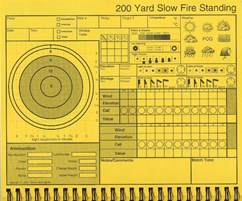
At a long range match some years ago, I was squadded with Michelle Gallagher, the national and international champion. Keeping score for her, I noted she didn’t use a data book at all, just concentrated on her shooting. When I interviewed Nancy Tompkins (Michelle’s mom and a long time repeat champion at long range, Palma and smallbore), she told me she doesn’t use a data book while competing, either. However, Nancy said a shooting diary (notes) is very important and she still uses one. I believe Mid Tompkins (Nancy’s husband) also doesn’t use a data book during competition. At matches, I routinely see High Masters who also decline to use data books.
It’s kind of silly for someone of my pathetically lesser skills to disagree with the methods of champions, and I have long felt the data book is a distraction for me, so I emulate them and pay it little mind now in long range, after I find my zero. The end result, I think, is that I concentrate more on my shooting, and so my wind doping has improved. I still use the data book in the offhand and rapid fire stages of HP competition.














